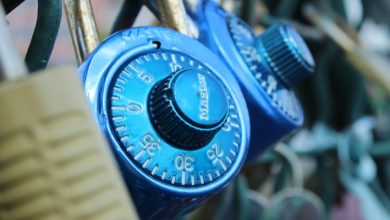How to Protect Your Crypto from Malware and Ransomware

- Understanding the risks of malware and ransomware in the world of cryptocurrency
- Best practices for securing your crypto wallet from cyber threats
- Common types of malware and ransomware targeting cryptocurrency users
- Steps to take to prevent malware and ransomware attacks on your digital assets
- The importance of keeping your antivirus software up to date in protecting your crypto
- What to do if your crypto wallet is compromised by malware or ransomware
Understanding the risks of malware and ransomware in the world of cryptocurrency
When dealing with cryptocurrency, it is crucial to understand the risks associated with malware and ransomware. Malware is malicious software designed to infiltrate and damage computer systems, while ransomware is a type of malware that encrypts files and demands payment for their release.
Both malware and ransomware pose a significant threat to cryptocurrency holders as they can result in the loss of funds or sensitive information. Cybercriminals often target individuals in the crypto space due to the decentralized and pseudonymous nature of transactions, making it difficult to trace and recover stolen assets.
To protect your crypto assets from malware and ransomware attacks, it is essential to take proactive measures such as installing antivirus software, keeping your operating system and applications up to date, and avoiding clicking on suspicious links or downloading unknown files.
Additionally, consider using hardware wallets or cold storage solutions to store your cryptocurrency offline and minimize the risk of exposure to online threats. By staying informed about the latest cybersecurity trends and best practices, you can reduce the likelihood of falling victim to malware and ransomware attacks in the world of cryptocurrency.
Best practices for securing your crypto wallet from cyber threats
When it comes to securing your crypto wallet from cyber threats, there are several best practices to keep in mind. One of the most important steps you can take is to use a hardware wallet, which provides an extra layer of security by keeping your private keys offline. This makes it much harder for hackers to gain access to your funds.
Another key practice is to always use two-factor authentication (2FA) on your wallet accounts. This adds an extra layer of security by requiring a second form of verification in addition to your password. By using 2FA, you can significantly reduce the risk of unauthorized access to your wallet.
It’s also important to regularly update your wallet software to ensure that you have the latest security patches and updates. Hackers are constantly evolving their tactics, so staying up to date with the latest security measures is crucial to protecting your funds.
Avoid clicking on suspicious links or downloading attachments from unknown sources, as these can be common ways for hackers to install malware on your device. Always verify the source of any communication before taking any action that could compromise the security of your wallet.
Lastly, consider using a VPN when accessing your wallet online. A VPN encrypts your internet connection and masks your IP address, making it much harder for hackers to intercept your data or track your online activity. By following these best practices, you can help protect your crypto assets from malware and ransomware attacks.
Common types of malware and ransomware targeting cryptocurrency users
There are various types of malware and ransomware that specifically target cryptocurrency users, aiming to steal their digital assets. It is crucial for crypto holders to be aware of these threats and take necessary precautions to safeguard their investments.
- Keyloggers: These malicious programs record keystrokes on a user’s device, allowing hackers to capture sensitive information such as login credentials and private keys.
- Trojans: Trojans can disguise themselves as legitimate software to trick users into downloading them. Once installed, they can give hackers unauthorized access to a user’s crypto wallet.
- Ransomware: Ransomware encrypts a user’s files and demands payment in cryptocurrency in exchange for the decryption key. Falling victim to ransomware can result in significant financial losses.
- Phishing: Phishing attacks involve tricking users into revealing their login credentials or private keys through fake websites or emails that mimic legitimate sources.
- Malvertising: Malvertising involves placing malicious code in online advertisements, which can infect a user’s device when they click on the ad.
By understanding the common types of malware and ransomware targeting cryptocurrency users, individuals can implement effective security measures to protect their digital assets from unauthorized access and theft.
Steps to take to prevent malware and ransomware attacks on your digital assets
Protecting your digital assets from malware and ransomware attacks is crucial in today’s interconnected world. Follow these steps to safeguard your crypto investments:
- Keep your software up to date: Regularly update your operating system, antivirus, and firewall to protect against the latest threats.
- Use strong passwords: Create complex passwords with a mix of letters, numbers, and special characters to make it harder for hackers to crack them.
- Enable two-factor authentication: Add an extra layer of security by requiring a second form of verification, such as a code sent to your phone, to access your accounts.
- Avoid clicking on suspicious links: Be cautious of emails or messages from unknown senders and avoid clicking on links or downloading attachments that seem suspicious.
- Backup your data: Regularly backup your files and store them in a secure location to prevent loss in case of a ransomware attack.
By following these simple steps, you can significantly reduce the risk of malware and ransomware attacks on your digital assets. Stay vigilant and proactive in protecting your crypto investments.
The importance of keeping your antivirus software up to date in protecting your crypto
Keeping your antivirus software up to date is crucial in protecting your cryptocurrency from malware and ransomware attacks. Antivirus software acts as a shield against malicious software that can infiltrate your system and steal your sensitive information. By regularly updating your antivirus software, you ensure that it has the latest virus definitions and security patches to detect and block new threats.
What to do if your crypto wallet is compromised by malware or ransomware
If you suspect that your cryptocurrency wallet has been compromised by malware or ransomware, it is essential to take immediate action to prevent further damage. Here are some steps you can take to address the situation:
1. **Disconnect your device from the internet**: The first thing you should do is disconnect your device from the internet to prevent the malware from spreading further or communicating with its source.
2. **Contact your wallet provider**: Reach out to your cryptocurrency wallet provider as soon as possible to report the incident. They may be able to provide guidance on how to secure your account or recover any lost funds.
3. **Run a malware scan**: Use reputable antivirus software to scan your device for malware or ransomware. Remove any threats detected to ensure that your system is clean.
4. **Change your passwords**: Change the passwords for your cryptocurrency wallet, as well as any other accounts that may have been compromised. Use strong, unique passwords to prevent future attacks.
5. **Enable two-factor authentication**: Enable two-factor authentication for an extra layer of security on your cryptocurrency wallet. This will help protect your funds even if your password is compromised.
By taking these steps promptly, you can minimize the damage caused by malware or ransomware and safeguard your cryptocurrency investments. Remember to stay vigilant and keep your security measures up to date to prevent future attacks.



